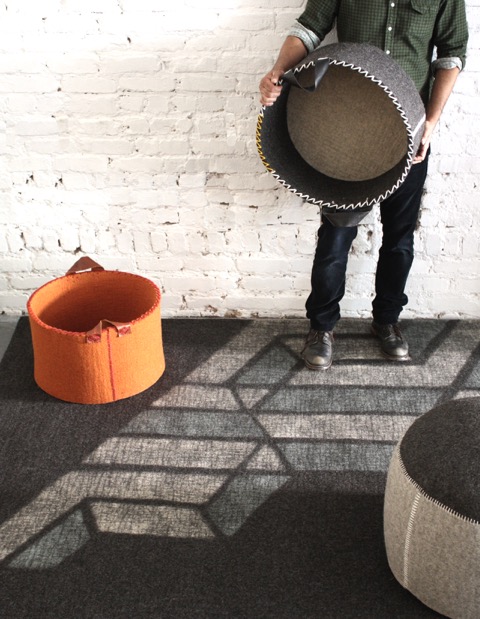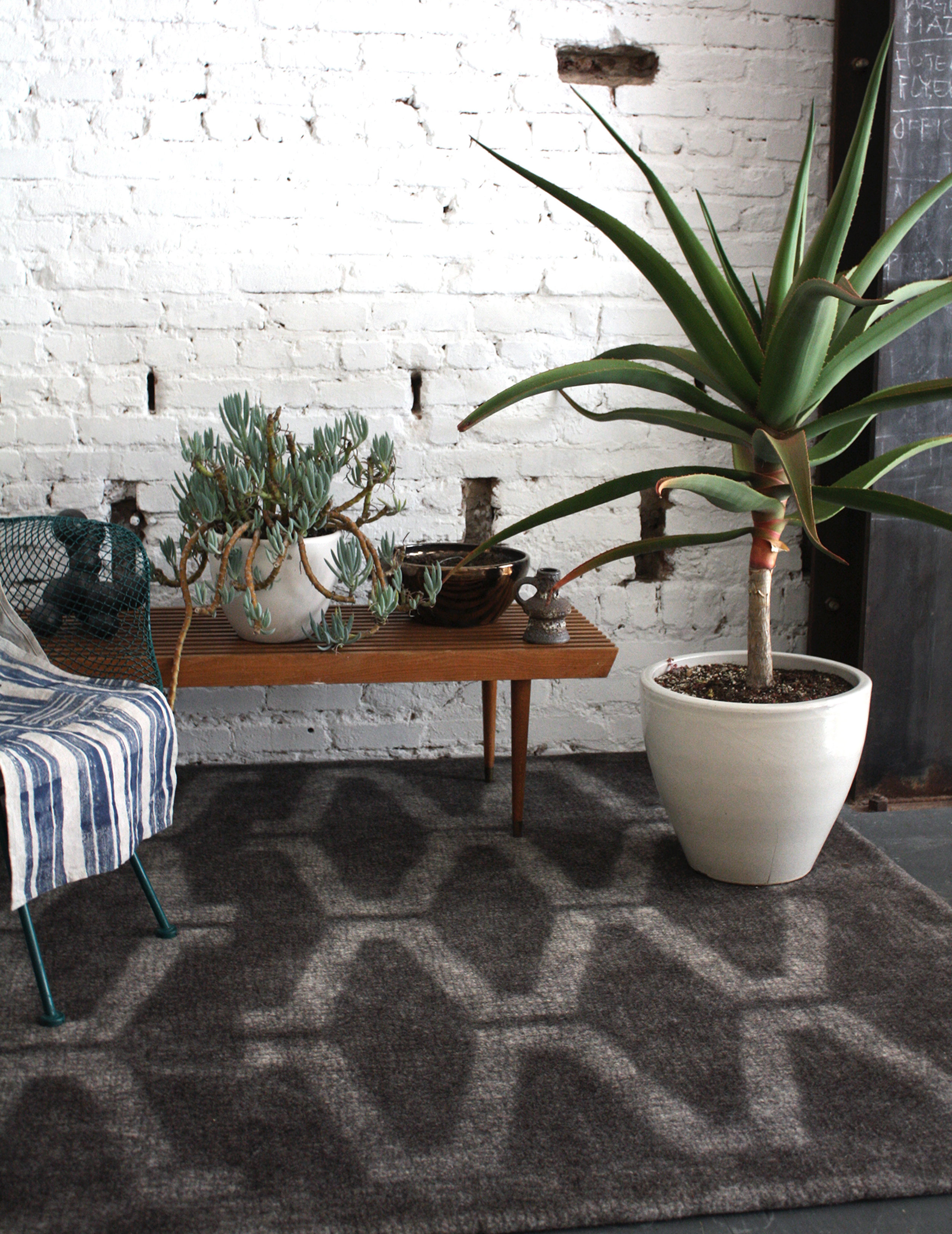Peace Industry
Peace Industry began with a gift. In 1999, Dodd Raissnia bought his friend Melina, a painter and graphic designer fresh out of Chicago Art Institute, a little felt rug that he found in a craft shop in Tehran. When the pair became a couple, they wanted to build a business together. Melina, completely charmed and intrigued by this ancient craft, encouraged Dodd to take her to Iran to find more rugs. Their original idea was to import and sell them. But when they traveled to Tehran in 2001, they discovered there was not an ample supply of felt rugs available. The felting tradition, practiced by nomads for thousands of years, had almost entirely died out. Dodd and Melina decided to try to make their own rugs using Melina’s designs.

Dodd, a native of Tehran, found a local artisan who was able to produce Melina’s rug. This first piece was so well received that the couple was encouraged to go forward with their venture. Ultimately, Melina and Dodd outfitted a factory in Iran. They wanted to both expand and control the quality of the rug production. They began training local workers in the nearly lost art of producing felt rugs.

Through trial and error, constant research and innovation, Melina and Dodd arrived at a process that generated a durable, hard felt of high quality. Peace Industry rugs are made from carpet-grade lamb’s wool, which is plentiful in Iran. Dodd and Melina use a wool that is both tactilely appealing and wears well.
I spoke with Melina and Dodd in their Peace Industry showroom in San Francisco’s Mission District. Walking in, I was completely taken by the warm, engaging rugs with simple, modern designs. Melina’s shapes feel organic and natural, but also very clean. I was also taken with Melina and Dodd. Melina has wavy, dark brown hair and a big, magnetic smile. She frequently let out a deep, kind, outrageous laugh while sharing the story of Peace Industry with me. Dodd, tall and elegant, interjected and clarified periodically. They have been working and creating together for nearly twenty years and the comfort and ease between them is apparent.
AM Can you explain the felt making process?
MR In order to make a felt rug, you need a big floor with a drain and a large woven mat called the mother cloth. You arrange carded wool on top of the cloth and press it down with big, wooden forks. Then you sprinkle it with hot water. The rug keeps getting pressed down and walked on until you place another layer on top.

DR The pattern is made upside down. These women (showing me photos of felt makers from a century ago) are felting in the Turkoman region of Iran. They are rolling the rug and using the pressure of their arms to press it down.
MR That’s felting. And it’s still the same process - it’s the weight of people’s bodies.
DR The rug starts out almost twice as large and it is shrunk into the final size. But it doesn’t shrink perfectly. In order to keep the design you want, you have to constantly manipulate it, pull it, beat it, and sculpt it, so you are straightening the edge as it’s shrinking.
MR The edges of our rugs are all hand-rolled.
AM Can you talk about how the rugs are eco-friendly?
MR We don’t use any chemicals in the manufacturing process. We don’t put a backing on the rugs so you don’t need a rug pad. You just lay the rugs right on the floor. The only by-product of the process is dirty, sheepy water.
DR The sheep are raised the way they have been for thousands of years. They are mountain grazed and grass fed. We buy local wool directly from the shepherds.
MR It is all from neighboring villages within a 100-mile radius from the workshop.
AM How do you create the colors?
MR We use all the natural wool colors and we also blend them to create new colors. The fog (colorway) is white wool with a little bit of black. For the non-neutral colors, we dye the white wool.
AM Where do you get your design inspiration?
MR From my own work as a painter. I also draw inspiration from other textile designers and multidisciplinary artists. Ray Eames is a really big influence on me.
AM Can you tell me about the name Peace Industry?
MR Before we got into rugs, I had a business called Peace Flags out in Point Reyes. I was making screen printed T-shirts and peace flags with the same logo that we have now. The peace flags were a response to the Iraq war. It was a lot of fun. We also made really cute baby T-shirts and peace panties and it was paying the bills. Then we got into the rug side of our business and it just exploded. We had to change the name because we decided it’s not just peace flags anymore… it’s more than that. It’s an INDUSTRY. (Melina lets out one of her big, warm laughs.) AM Are you still working towards peace through your business?
MR Our business is normalizing the relationship between the U.S. and Iran in a very small, grassroots way. We run a workshop in Iran employing 30 people. We definitely intend to expand on that by doing collaborations with artists in Iran. That’s the best way for us to use our talents. I believe that developing personal relationships and friendships builds resilience and understanding that we all share one planet.

